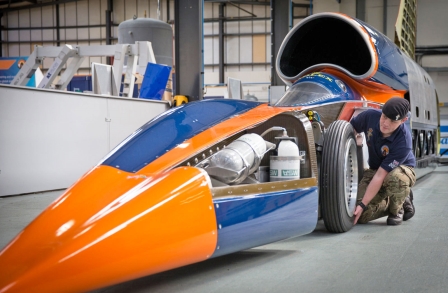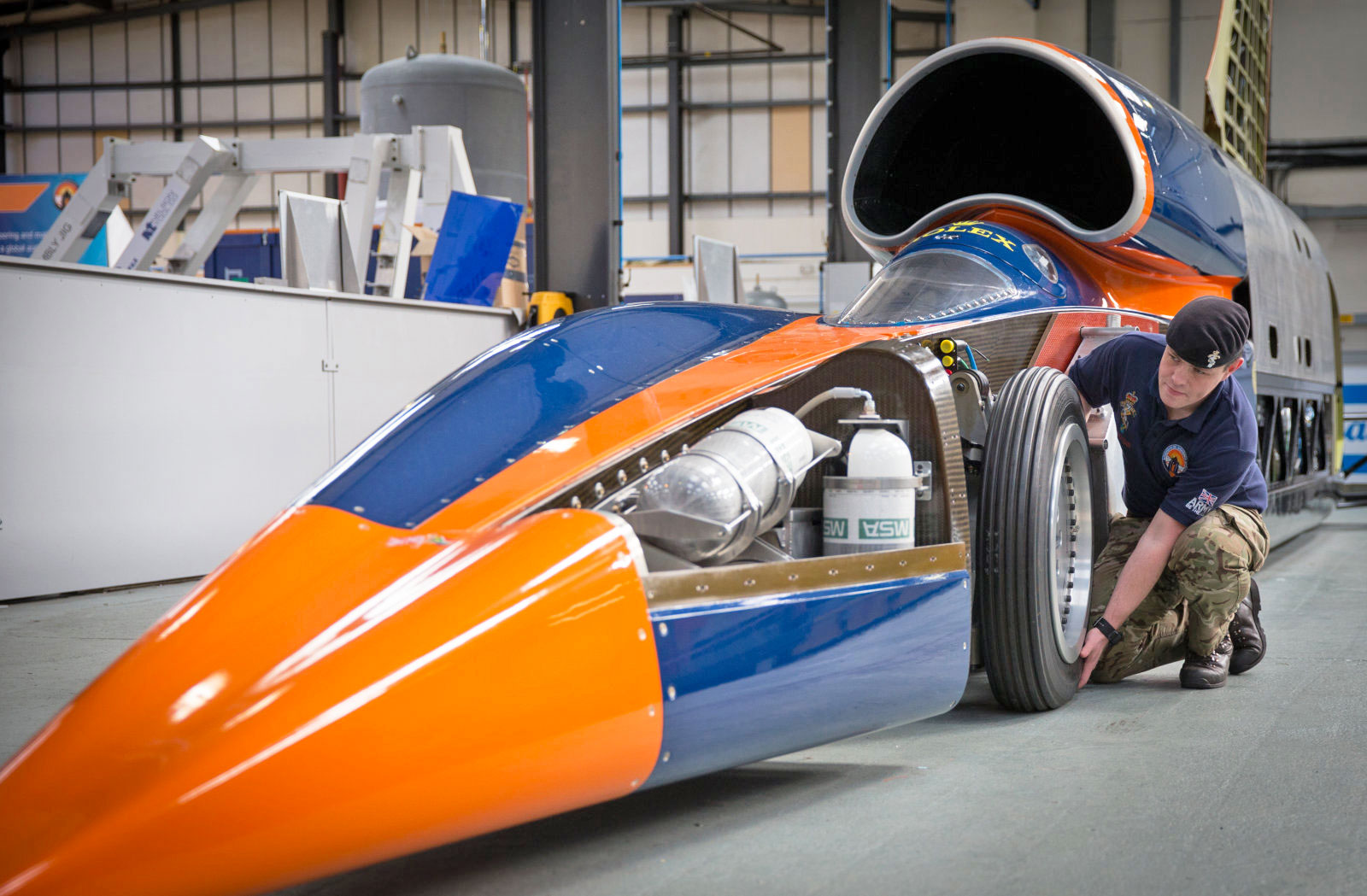Bloodhound’s land speed record attempt set for October 2017
The team behind the Bloodhound SSC, a supersonic car designed to beat the land speed record, has some good news and some bad news to share. First and foremost, it’s secured new funding, meaning the crew can reform (some engineers were forced to take short-term contracts elsewhere) and start preparing for the action in South Africa. The bad news is that the entire timeline for beating the record — currently 763MPH, set by the Thrust SSC in 1997 — has slipped yet again. A slow-speed test run will now take place in the UK next June, rather than later this year. The actual record attempt will be in October, not the April-May window stated before.
Engadget was able to see the Bloodhound car — or what had been built so far, at least — at London’s Canary Wharf last September. It’s a ferocious machine, measuring 13.4 meters in length and weighing roughly seven and a half tonnes. Most of that weight can be attributed to the car’s three-pronged power system: a Rolls-Royce EJ200 jet engine, sourced from an RAF Eurofighter Typhoon, a cluster of Nammo hybrid rockets and a supercharged Jaguar V8 engine, which drives the rocket oxidiser pump. Together, they produce a whopping 135,000 brake horsepower.
The Bloodhound will be driven by RAF Wing Commander Andy Green, who set the previous record in the Thrust SSC. He’ll take on the title twice — the first, at 800MPH, will cement the car and its team as the new land speed record holders. A second attempt will be held later — sometime in 2018, according to the BBC — to see if the car can breach 1000MPH.
Before then, however, the team has some work to do. It wants to disassemble the car and create a “user manual” that can be referenced by its mechanics out in the desert. The crew will then rebuild and, where necessary, modify the vehicle before sending it to Cornwall for a 220MPH test run. “We’ve come through this difficult stage wiser, leaner and fitter,” Bloodhound project director Richard Noble said. “This is probably the biggest moment in the project’s history. Before, we could only see financially a few months ahead, but now we can put our foot down.”
(36)




